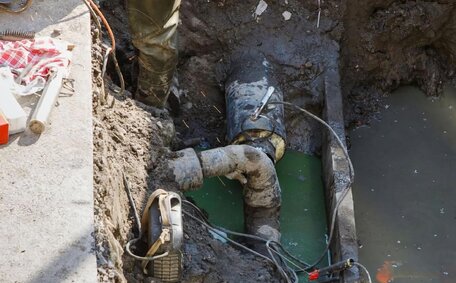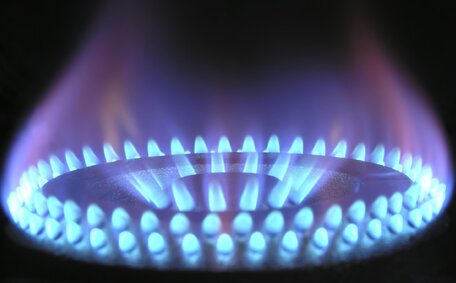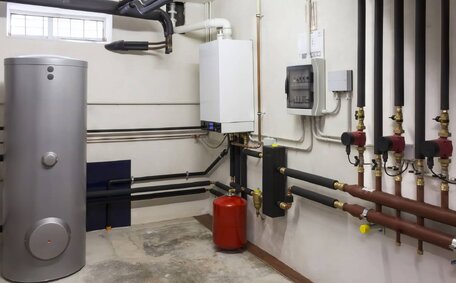
Sump Pump Failure Solutions
Sump pumps fail due to power outages, clogs, frozen pipes, and more. Prevent water damage by understanding causes and contacting plumbers for solutions to extend pump life.
Read MorePipe relining is a trenchless repair method that avoids excavation. It involves inserting a flexible epoxy resin lining into the existing pipe to essentially create a robust new pipe within old infrastructure. The liner bonds with the existing pipe’s interior, sealing off any cracks and preventing leaks.
Pipe relining is suitable for various segments of your plumbing system, such as sewer and stormwater pipes, effectively restoring functionality and flow capacity. This non-invasive technique preserves gardens and driveways by creating a strong new pipe within the existing one.
Addressing issues such as tree root intrusions and cracks promptly is essential to secure your plumbing and prevent significant damage. A CCTV inspection is the first step, accurately pinpointing damage before inserting custom-sized liners into the pipe. Subsequently, the lining cures and hardens within the section pipe inside the old structure to form a smooth, seamless and enduring solution.
There are several situations when pipe relining is recommended over traditional pipe replacement or repair methods:
Pipe relining allows for comprehensive repair of damaged drains with minimal impact on the surrounding landscape or infrastructure. As it is a trenchless technique, it lets you get your driveways, gardens and yards spared from being dug up. The process can aid in repairing your pipes to achieve a faster, cleaner, and more efficient outcome than traditional methods, which caused disruptions and were costly.
Factors such as the extent of damage, pipe length, and choose pipe type are crucial considerations to ensure optimal repairs. An initial CCTV drain inspection helps determine if relining is appropriate for the damaged pipe sections.
The pipe relining process begins with a CCTV inspection to evaluate the damage and identify the affected pipe sections. The inspection ascertains the feasibility of relining and pinpoints the precise sections that require repair.
Subsequently, the damaged pipe section must be thoroughly cleaned and prepped for relining. Tools like the cutter water jetter and robotic cutter are essential to remove debris and ensure the new lining bonds firmly to the pipe walls.
After cleaning, a resin-soaked felt liner is inserted into the pipe via access points. The liner is expanded and then filled against the pipe walls, plugging crevices and punctures where damage may lurk unnoticed within the aged infrastructure.
Once the liner cures under ultraviolet light, it becomes a seamless, durable lining that can last for decades. After pipe relining, with flow capacity restored and leaks prevented, the relined pipe only requires post-installation CCTV verification.
When addressing your plumbing issues, relining using pipe relining techniques is faster, cleaner and more cost-effective compared to the traditional method of digging up and replacing your plumbing. Relined pipes boast a life-span exceeding 50+ years, causing minimal commotion or disruption to properties as they restore plumbing infrastructure in situ, without the need to excavate gardens, driveways or yards.
Outlined here are the key steps involved in the pipe relining process, crucial to restoring your piping:
As a trenchless and non-invasive method, pipe relining abolishes the need to dig, thus safeguarding your gardens and landscaping. By restoring pipes from the inside-out, it offers durable results for your property for decades while avoiding future damage.
The key equipment and materials utilised in the pipe relining process include:
The materials are specialised and precise, tailored to match the specific diameter and length required. Your plumber and our expert team handle these steps with care throughout the trenchless relining process until the new lining is hardened and restored.
After establishing suitability through a CCTV inspection, the critical next steps are preparing and installing the liner. Our experts use customised tools to meticulously clean the damaged section pipe.
Pipe cleaning is done using high-pressure water jetters that clear minerals, roots, and debris, enabling the liner to bond well to the pipe walls. We may also use scraping tools and robotic cutters to cut out substantial blockages that are involved in pipe obstructions.
With the pipe interior prepped, we introduce a soaked liner inside the pipe through an existing access point. This flexible liner is sized to the exact length and diameter needed. We carefully insert it into the damaged pipe through an existing access point.
The liner is then inflated with compressed air, pressing it against the pipe walls to seal any cracks and leaks. Over a few hours, UV lights cure and harden the resin-coated liner to form a tough, seamless new pipe lining.
Our techs make sure proper inflation and curing are achieved to prevent wrinkles or air voids that could impact structural integrity. The outcome is a perfect finish to the pipe inside, with an enduring liner that precludes further damage while reinstating flow capacity.
Once the resin-coated liner is inserted into the damaged pipe section, a critical step is curing the liner to harden and bond it permanently in place. We utilise UV light curing as an eco-friendly and effective method.
Positioning a specialised UV light train inside the pipe, we activate the curing process, causing the epoxy resin to solidify. This securely bonds the new liner to the pipe which was old, reinforcing its walls. Curing with UV light is quick, solidifying the liner in 2-3 hours and preventing structural damage from occurring.
Other curing methods, such as hot water or steam, though slower, are suitable for longer pipe sections and help to ensure a thorough resolution of any blockages. Ambient temperature curing also works but takes 12+ hours. We select the ideal curing method based on pipe size and location.
Throughout the curing process, we monitor the pipe lining using CCTV to ensure no faults, wrinkles or air pockets form that could impact structural integrity and flow capacity. This creates a unified, leak-proof lining that provides reliable service for many years.
A post-installation CCTV inspection is the final step to ensure the quality of the pipe relining. Our technicians carefully inspect the repaired pipe in its entirety to validate the quality and confirm no faults, upholding our commitment to excellence.
We confirm through CCTV footage:
Only Only when our experts confirm a successful pipe relining through CCTV validation do we consider the task finished, and your plumbing solutions come out from our establishment. This quality assurance process is vital to guarantee decades of leak-free performance from the trenchless pipe repair.
The advantages of pipe relining are numerous, significantly benefiting Cronulla homeowners and businesses by serving as a remedy into damaged piping systems:
By repairing pipes internally, pipe relining restores functionality and flow while preserving property integrity. This trenchless technique is the modern, practical and green solution for leaky, damaged or slow-draining pipes.
Pipe relining offers numerous advantages compared to traditional pipe repair methods that involve excavating and replacing pipes:
Factor Pipe Relining versus Traditional Pipe Repair
| Cost | Generally offers savings of 50% or more, making it a cost-efficient alternative | Often costlier due to extensive excavation work and the need for new pipes |
| Time | Completion is rapid, typically within 1-3 days | Takes weeks with digging, replacement and refilling trenches |
| Property Impact | Minimally invasive with no digging or demolition | Major destruction to driveways, landscaping, gardens etc |
| Longevity | Epoxy linings properly cured can last over 50 years | New pipes may last 15-20 years before needing replacement |
Understanding the internal rehabilitation of pipes with durable epoxy resin linings reveals the rapid restoration function of pipe relining without property damage. This modern technique is faster, greener and more affordable than traditional exterior pipe repairs or full replacement.
Sump pumps fail due to power outages, clogs, frozen pipes, and more. Prevent water damage by understanding causes and contacting plumbers for solutions to extend pump life.
Read MoreIf your monthly gas bill rises suddenly for no clear reason, the cause could be a gas leak from old pipes or appliances. Contact your provider to investigate.
Read MoreScale buildup reduces the efficiency of hot water systems over time. Regular descaling helps remove this. Flush your system with vinegar or a descaling solution.
Read MoreCronulla, 2230 NSW
We will call back as soon as possible.




